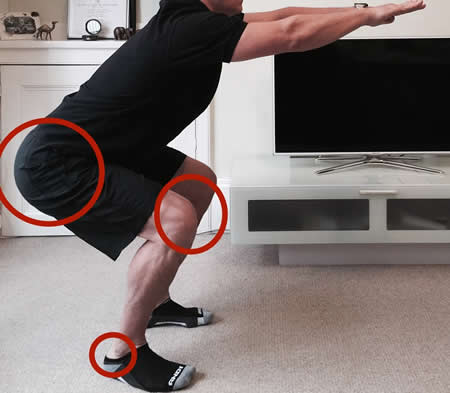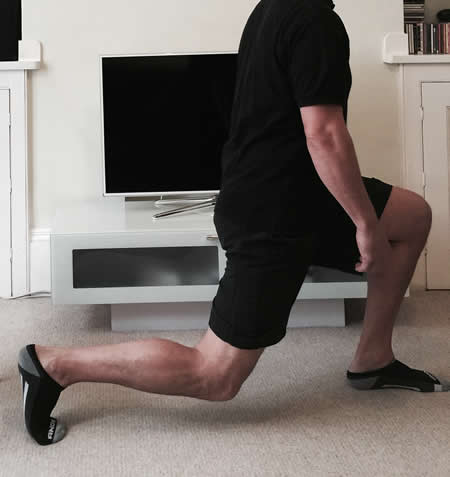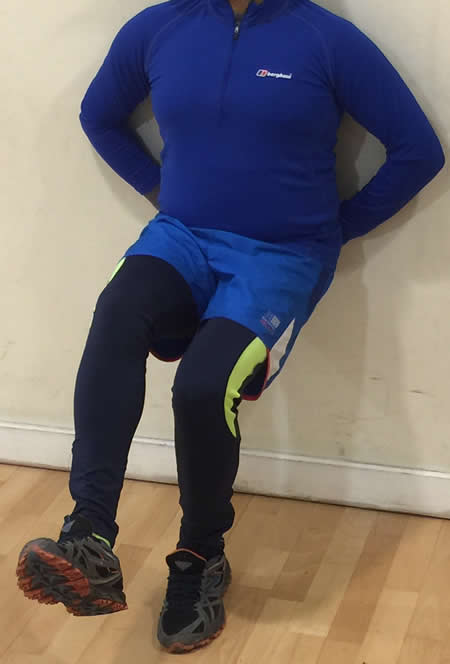Positive Health Online
Your Country

Prevention of Injury Through Strength Training
listed in exercise and fitness, originally published in issue 227 - January 2016
Anyone who is active will tell you that the most annoying barrier to continuing his or her sport or activity of choice is injury. It comes without warning, it is always inconvenient, and most importantly, it stops you from spending your precious free time doing what you really enjoy. The good news is, however, that by incorporating strength training into your training regime, you can help prevent those pesky injuries from taking away your mojo and more importantly, from wasting your time not doing what you love.
Why do we get Injured?
Here are a few reasons why injuries happen in the first place:
- Overtraining: not allowing sufficient recovery time between training sessions
- Incorrect technique: using poor technique resulting in incorrect weight distribution or range of motion
- Muscular imbalance: weakness of agonist or antagonist muscle groups results in uneven strain on joints or connective tissues like ligaments and tendons, causing premature wear and tear.
Strength Training: What Exactly is it and how can it Help You?
Strength training involves using resistance (ranging from body weight to therabands to weights) to build lean muscle mass by progressively challenging the body. I will focus on strength training using compound movements, as these exercises promote balanced muscle development, while also helping to strengthen bones (more on that later).
What is a Compound Movement?
A compound movement uses more than one joint. An example of a compound movement is a bodyweight squat, demonstrated in Figure 1. The bodyweight squat engages the hips, knees and ankles, meaning that the major muscle groups on both ends of these joints are also being recruited.

Figure 1: Bodyweight Squat
How can Strength Training Help Prevent Injury?
Strength training can help prevent injury in three ways:
- It will help correct muscular imbalance
- It will help improve bone strength
- It will help build skeletal muscle, thereby ensuring correct posture and support for daily activities
Correcting Muscular Imbalance
Movement is facilitated by the coordinated activity of antagonistic pairs of muscle groups (for example the quadriceps, located on the top front of your leg, and the hamstring, located on the top back of your leg).
Our body’s main objective is to maintain balance, and when one muscle is weaker or fails to perform its function as required, others must pick up the slack. If this muscular imbalance continues to take place unaddressed, it leads to uneven pressure on joints, as well as reduced range of motion.
To avoid perpetuating muscular imbalance and potential injury risk, it is necessary to ensure that these antagonistic muscle pairs are trained equally. In order to do this however, you must first identify if and where muscular imbalances take place. This can be accomplished through testing.
Testing for Muscular Imbalance
The best way to discover and correct muscular imbalance is to test for the imbalance, target the imbalanced area through specific exercise, and then retest on a regular basis to confirm that the imbalance has been solved.
Here are two examples of exercises you can do to test for muscular imbalance. It’s important to remember however that identifying and correcting imbalances can be tricky business requiring multiple assessments. Enlisting a trained professional will not only provide an additional set of educated eyes to locate potential issues, but also a knowledge base of appropriate movements to pinpoint and address any imbalances that are flushed out.
1. Walking lunge
Start by standing upright, and then step forward into a lunge position, step forward to return to the starting position, and then repeat the same movement with the opposite leg

Figure 2: Walking Lunge Test
Its best to perform this test walking toward a mirror, and you want to make sure that you can lunge while keeping your knee in line with your foot. You also want to make sure that your knee doesn’t turn inward or laterally move (side to side) as this suggests a lack of strength in the muscle groups that support the knee.
2. Single Leg Squat test
The single leg wall squat test will help determine disparity in muscle strength between your right and left legs. Assume a wall sit position with your knees bent to 90 degrees. Lift one foot off the ground and time how long you can hold that position standing on one foot. Record the time, and repeat the same process on the other side (See Figure 3).

Figure 3: Single Leg Squat Test
This is a great test for determining relative quadriceps and gluteus muscle strength between each leg. If you find that there is a considerable difference in strength between legs, you can perform exercises like split deadlifts and split leg squats, always starting with the weaker leg.
By starting with your weaker leg first and repeating the same repetitions on the stronger leg, you will continue to maintain strength on the strong side while also improving strength on the weak side, thereby correcting the muscular imbalance.
How do you balance your strength training?
How do you strength train to keep your body balanced? Here are three tips:
- Plan in advance, ensuring that you address your entire body: by mapping out your training sessions in advance with your entire body in mind, you will ensure that you train your body as a unit, not just the exercises/parts that you like;
- Rest appropriately: a vital and often overlooked area of strength (or any other training for that matter) is rest. Allowing your body to recover properly through planned rest days, proper hydration and nutrition during and after training will mean that your sessions will be productive, and you will return to training stronger and ready to perform at your best;
- Stretch: stretching post-session is vital to re-align muscles that have been potentially misaligned during the training process. Additionally, lack of stretching can lead to prolonged recovery that leads to inconsistency and poor performance. Here is a link to a short video that outlines a post-workout stretching routine that can be used following most workouts.
www.youtube.com/watch?v=Rm2FmD8GlSo&feature=youtu.be
Improving / Maintaining Bone Strength
Bones are living things that respond to muscular movement. When muscles are contracted, because they are connected to the bone through tendons the bone will move in response to the muscular contraction.
The bone responds by building density, and depending on your age this can either help you improve bone density or maintain what you already have.
This is where compound movements come into play. Compound movements involve the use of more than one joint. The benefit in terms of bone development is that by using more than one joint to perform an exercise, muscles are recruited at both ends of the bone, causing that bone to respond to the muscular contraction by building density.
Why Bone Strength Matters
Bone strength matters because as we age our bone density deteriorates if we don’t fortify it by remaining active.
From the age of 40 for women/30 for men, sex hormonal production begins to slow down. This decrease in hormone production leads to menopause / andropause respectively, with one of the side effects being decreased bone density.
Because this hormonal change is a virtual certainty, planning a strategy to maintain / prevent bone density loss is essential to ensure optimal health as we age, and this is why strength training is so important.
Building a Stronger Muscular Foundation to Support your Activity
Strength training also helps to prevent injury by strengthening our body’s support system, aka skeletal muscle.
Skeletal muscle has two primary functions:
- It contracts to facilitate body movements, and
- It supports posture.
If you follow the advice of FitBit and other wearable technologies, the default setting is to take 10,000 steps each day. Sedentary individuals take between 1-3000 steps, with more active individuals stepping out far more than 10,000 times each day.
Unless you carry your body with perfect posture (in 6 years in the fitness industry, I’ve seen one person with perfectly aligned posture…and it isn’t me, as you’ll shortly!), every step you take will result in uneven pressure on your joints.
Over time this uneven pressure can manifest itself into injuries including non-specific low back pain and knee discomfort. Add in the strain caused by incorrect sitting/standing, and the value of maintaining correct posture becomes even more apparent.
If you don’t pay attention to maintaining correct posture through a proactive training strategy that includes strength training, you will be setting ourselves up for potential issues through the most basic of daily activities.
Please note I am not suggesting that we all run out and start power lifting. Rather, by including strength training as a part of an active lifestyle it will be possible to correct and maintain correct posture, ensuring that daily activities like walking are performed correctly and without creating potential problems down the track.
Strength training is an effective and essential part of any long-term strategy to prevent injury and to maintain health. Strength training does not equal bulk and disproportion; instead it translates into balanced and effective movement and overall functionality.
Sources
1. University Of Florida. "Sports Scientists Say Weight Lifting Is Key In Preventing Severe Injuries." ScienceDaily, 22 October 1997. www.sciencedaily.com/releases/1997/10/971022155847.htm
2. Workouts, Fitness and Nutrition: Skeletal Muscles and Anagonistic Pairs: www.aworkouts.com/skeletal-muscles-and-antagonistic-pairs/
3. www.mayoclinic.org/healthy-lifestyle/fitness/in-depth/strength-training/art-20046670
4. Mark Sisson, The Danger of Muscle Imbalances and the Importance of Symmetry
5. http://dailyburn.com/life/fitness/muscle-imbalances-functional-movement-screen/
6. www.prevention.com/health/health-concerns/strength-training-exercises-strong-bones
7. Richard Joshua Hernandez, B.S. and Len Kravitz, Ph.D , The Mystery of Skeletal Muscle Hypertrophy www.unm.edu/~lkravitz/Article%20folder/hypertrophy.html
8. Chris Stokel-Walker, Do you really need to take 10,000 steps a day to keep fit? www.bbc.co.uk/news/magazine-33154510
Comments:
-
No Article Comments available